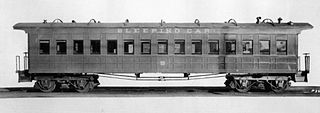
The sleeping car or sleeper is a railway passenger car that can accommodate all passengers in beds of one kind or another, for the purpose of sleeping. George Pullman was the American innovator of the sleeper car.

A railroad car, railcar, railway wagon, railway carriage, railway truck, railwagon, railcarriage or railtruck, also called a train car, train wagon, train carriage or train truck, is a vehicle used for the carrying of cargo or passengers on a rail transport network. Such cars, when coupled together and hauled by one or more locomotives, form a train. Alternatively, some passenger cars are self-propelled in which case they may be either single railcars or make up multiple units.

First class is the most luxurious and most expensive travel class of seats and service on a train, passenger ship, airplane, bus, or other system of transport. Compared to business class and economy class, it offers the best service and most comfortable accommodation.

Kodama is one of the three train services running on the Tōkaidō and San'yō Shinkansen lines. Stopping at every station, the Kodama is the slowest Shinkansen service for trips between major cities such as Tokyo and Osaka. The Kodama trains are used primarily for travel to and from smaller cities such as Atami. Travelers between major cities generally take the Nozomi or Hikari services, which make fewer stops.
There are many types of car body styles. They vary depending on intended use, market position, location, and the era they were made in.
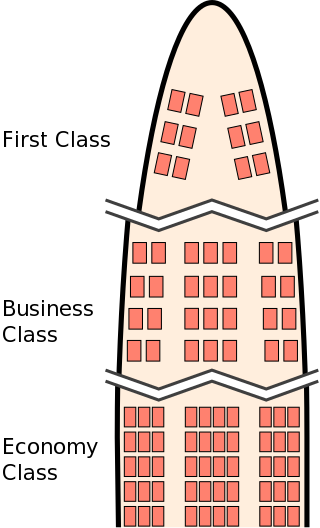
A travel class is a quality of accommodation on public transport. The accommodation could be a seat or a cabin for example. Higher travel classes are designed to be more comfortable and are typically more expensive.
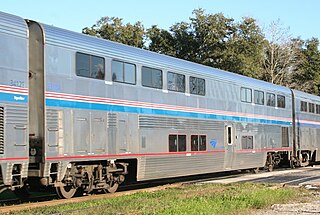
A passenger railroad car or passenger car, also called a passenger carriage, passenger coach, or passenger bogie is a railroad car that is designed to carry passengers. The term passenger car can also be associated with a sleeping car, a baggage car, a dining car, railway post office and prisoner transport cars.
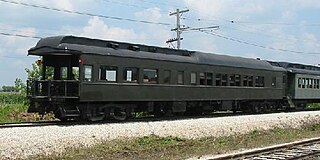
An observation car/carriage/coach is a type of railroad passenger car, generally operated in a passenger train as the rearmost carriage, with windows or a platform on the rear of the car for passengers' viewing pleasure. The cars were nearly universally removed from service on American railroads beginning in the 1950s as a cost-cutting measure in order to eliminate the need to "turn" the trains when operating out of stub-end terminals.

Women-only passenger cars are railway or subway cars intended for women only. They are a result of sexual segregation in some societies, but also can result from attempts to reduce sexual harassment and assault such as groping.

The Tait trains were a wooden bodied Electric Multiple Unit train that operated on the suburban railway network of Melbourne, Victoria, Australia. They were introduced in 1910 by the Victorian Railways as steam locomotive hauled cars, and converted to electric traction from 1919 when the Melbourne electrification project was underway. The trains derived their name from Sir Thomas James Tait, the chairman of commissioners of the Victorian Railways from 1903 to 1910. The first cars were built during 1909 with the last entering service in 1952.

The Z type carriages are an air conditioned steel passenger carriage used on the railways of Victoria, Australia. The carriages were constructed by the Victorian Railways from 1957 for use on interstate services.

A roomette is a type of sleeping car compartment in a railroad passenger train. The term was first used in North America, and was later carried over into Australia and New Zealand. Roomette rooms are relatively small, and were originally generally intended for use by a single person; contemporary roomettes on Amtrak, however, include two sleeping berths.
A parlor car is a type of passenger coach that provides superior comforts and amenities compared to a standard coach.

The TÜVASAŞ 2000, more commonly known as TVS2000, is a series of intercity railcars built by TÜVASAŞ for the Turkish State Railways between 1993 and 2005. They were built in order to revive TCDD's failing image in the early 1990s, for use on the Capital Express. Today they are the most common railcars in Turkey.

The RUB type carriage stock was a type of steel bodied air conditioned passenger carriage operated by the New South Wales Government Railways from September 1949 until April 2000.

The California Car is the first generation of intercity railcars owned by the California Department of Transportation (Caltrans) and operated by Amtrak under the Amtrak California brand on intercity corridor routes in Northern and Central California. The cars were built in the mid-1990s for the Caltrans Division of Rail by Morrison–Knudsen and the American Passenger Rail Car Company (Amerail). The cars are similar in exterior dimensions to Amtrak's Superliner, but original in design to provide rolling stock suitable for California intercity services up to six hours, with more frequent stops than most other Amtrak routes. All cars were overhauled by Alstom at its Mare Island facility between 2009 and 2012.
This page outlines the history and evolution of Victorian Railways (Australia) bogie passenger carriages, constructed with steel underframes and timber bodies up to 59 ft 9 in (18.21 m) long, as well as a few other carriages from the era.
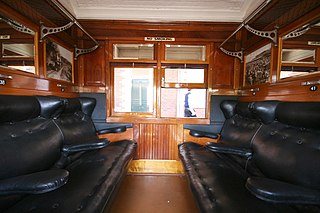
The E type carriages were wooden express passenger carriage used on the railways of Victoria, Australia. Originally introduced by Victorian Railways Chairman of Commissioners Thomas James Tait for the interstate service between Melbourne, Sydney and Adelaide, these Canadian-inspired carriages remained in regular service for 85 years over the entire Victorian network.

A California Car is a type of single-deck tramcar or streetcar that features a center, enclosed seating compartment and roofed seating areas without sides on either end. These cars were popular in California's mild Mediterranean climate offering passengers a choice of shaded outdoor seating during hot weather, or more protected seating during cool or rainy weather. They were also used in other climates to provide separate outdoor smoking and enclosed non-smoking areas. Some very early motor buses also used the combination car design.
















